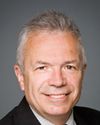Thank you for the question.
First, when you look at how to be ready, there are two aspects. The first is to have what we call situation awareness: knowing what's going on across Canada. What that speaks to is a need to have relationships and to be connected with the provinces, territories, and municipalities.
As was mentioned here already, we have our commanders in each of the geographical areas. We're mandated to maintain those relationships. They keep in close contact with the provinces, territories, and municipalities. They push that information up. And whatever information we have, we push down. So we actually have a command that has a common operating picture, or situation awareness, of what is going on across the country.
At the same time, to be prepared to deploy forces, if needed, you need forces on standby. I have a chart, if the committee would like to see it or would like to have it, that lays out exactly what we have ready to go. We touched on it in the speech. If something were to happen, what we would have ready to go, for example, as stated, would be the immediate reaction units, which are men and women from the land forces, which we could put anywhere across the country, if needed. We have ships on each coast ready to go. We have aircraft ready to go. As we saw with the forest fires throughout the summer, we can push aircraft where it is needed once we have a request from the province. In this case, it was from Ontario.
First, we have that awareness. Second, we have the forces on standby, ready to go, which has ensured that if needed, within 24 hours, we can put forces where we need to across the country if asked to by the provinces and territories.
There is also that second layer, which is whether this is where the federal government wants to go. The federal government, in the end, will turn to the Canadian Forces and the minister and say that this is what we want you to do as part of that issue.
On the second issue, which is very much discussed in other contexts as an either/or discussion, there is no either/or. You will find, as you go into this matter from a Canada Command perspective, that a lot of resources are needed or used by Canada Command to achieve its mission, if you look at the numbers. Last year 6,421 personnel were deployed across all of our operations, and days deployed were entered at 65. But in a broader context, it actually is pretty small.
When you take a look at it, it's very much a whole-of-government approach. For example, if something were to happen across the country, the municipalities would be the first responders. They would provide capability. After that, the province or the territory would come in and do what it needs to do. The federal government might then put in other responders before it came to the military. Clearly, when you look at the numbers, the numbers aren't huge, and the percentage of the commitment by Canada Command isn't huge, which is why it's never been an either/or discussion.
I would throw out to you that whenever I've asked for or needed capability, I've always had it within the time I've needed it. There has never been a case when I was not provided or my team wasn't provided with what was needed to support Canadians.





